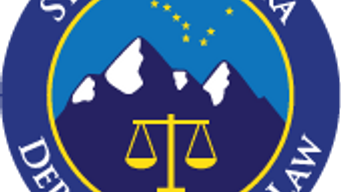Almost a year since the NCAA revised its guidelines to permit college athletes to exploit and monetize their name, image and likeness (NIL) rights, the collegiate NIL business has grown to almost $500 million. While the revised guidelines have benefited student-athletes considerably, a lack of uniform standards has led to confusion among states, limited oversight and questionable practices.
States Wait for NCAA and NCAA Waits for Feds
When states began passing legislation in 2019 enabling student-athletes to monetize their NIL rights, many delayed implementation with the hope that the NCAA would update its guidance to provide uniform rules. However, following the Supreme Court decision in Alston v. NCAA, concerns about antitrust challenges led the NCAA to implement a limited “interim policy” with little guidance on implementing NIL rules, while calling for Congress to pass federal legislation that would provide comprehensive national guidance.
This turn of events suddenly put states with more restrictive rules at a competitive disadvantage. As a result, five states have already amended their NIL laws and four others are in the process of doing so. And Alabama, realizing its more restrictive state law was doing more harm than good, repealed its legislation entirely. The focus of these changes in state laws has been on restrictions preventing universities from “facilitating” deals between student-athletes and prospective sponsors.
NIL Collectives Step Into the Breach
In the last year, groups of individuals (typically alumni and influential supporters of universities) have formed new business entities, with the purpose of funding NIL endorsements. Dubbed collectives, these entities are being organized to lure top-tier athletes to specific universities by promising them lucrative NIL payments. The NIL activities that student-athletes provide to the NIL collective members are murky, often consisting of autograph sessions and personal appearances. Perhaps most importantly, the value of the student-athletes’ NIL rights often bears little relation to the amount of compensation being paid to them, risking the type of “pay to play” that the NCAA prohibits.
Moreover, in states that do not prevent schools from facilitating NIL relationships, schools are able to work hand-in-hand during the recruiting process with NIL collectives to offer student-athletes an elite program, first-class facilities, national TV exposure and a lucrative NIL payday. The concept has caught on so well that, today, most of the major “Power 5” universities have at least one NIL collective affiliated with their program, with some having several.
NCAA Hopes to Rein in Collectives
In May 2022, the NCAA issued new guidance aimed at limiting the influence of NIL collectives and reaffirming its mission to prevent “pay to play.” The guidance focuses on the word “booster” and reiterates that, under current NCAA rules, a booster is not just an individual, but includes corporate entities and organizations that are known by a university to promote, or that have promoted, their athletic program or its student-athletes. The guidance makes it clear that:
- prior to a student enrolling at an institution, a booster may not communicate with any recruit;
- no booster may guarantee any deal for participating at an institution; and
- the institution or its staff may not arrange a meeting with any booster.
For current student-athletes, the NCAA stated that each deal needs to be evaluated on a “case by case analysis of the value that each athlete brings to an NIL agreement … ” and that deals may not be based on incentives, achievements or enrollment decisions.
With this new guidance, the NCAA is hoping to reset expectations about what constitutes permissible NIL activity. The NCAA has directed its staff to pursue actions that are contrary to its NIL policy, including violations of recruiting rules and rules against offering payment for performance. Given the aggressive growth of NIL collectives and the specter of Alston, however, an increase in enforcement action raises the prospect of a new round of litigation against the NCAA. Putting this genie back in the bottle likely will prove to be a formidable task.
The Bottom Line
- The rise of NIL collectives has dramatically reshaped the college recruiting landscape.
- The NCAA’s revised booster guidance is aimed at limiting the power and influence of NIL collectives and could very well lead to renewed litigation.
- Marketers and sponsors considering participating in NIL collectives must evaluate the NCAA enforcement landscape as well as the purpose and rules of the NIL collective to avoid being caught up in an investigation and lawsuits.
- Individualized NIL deals based on measurable, market-driven services remain the safest option for marketers.





